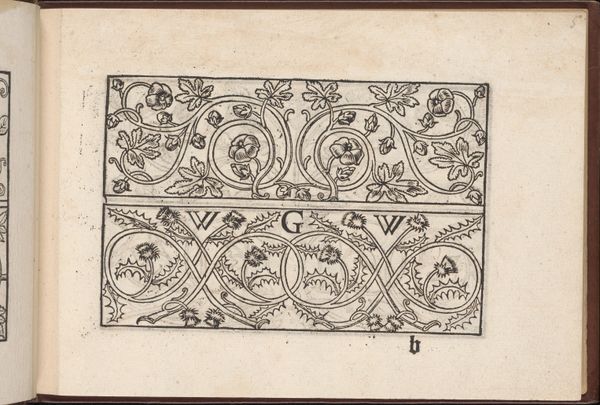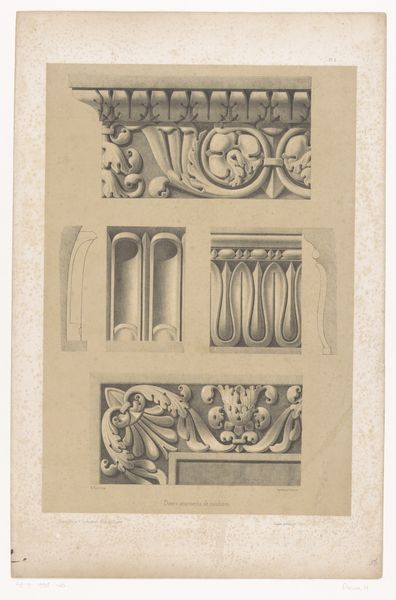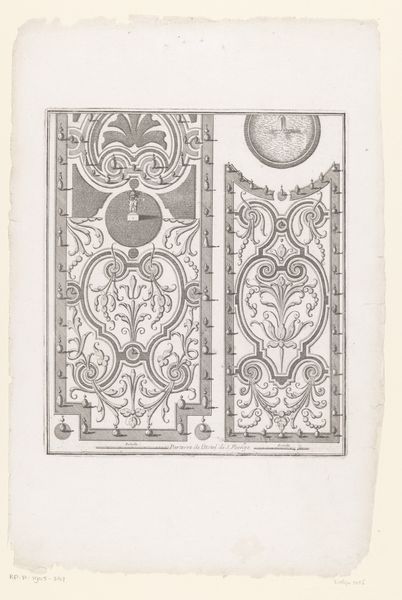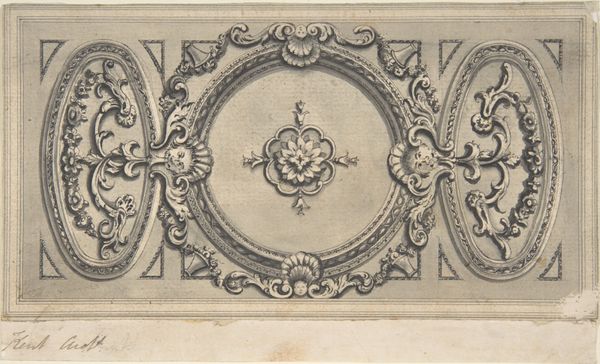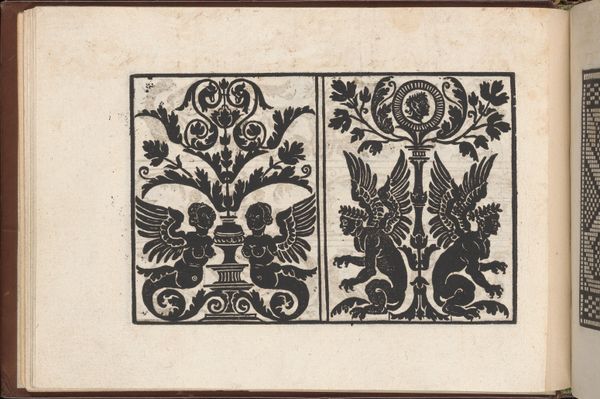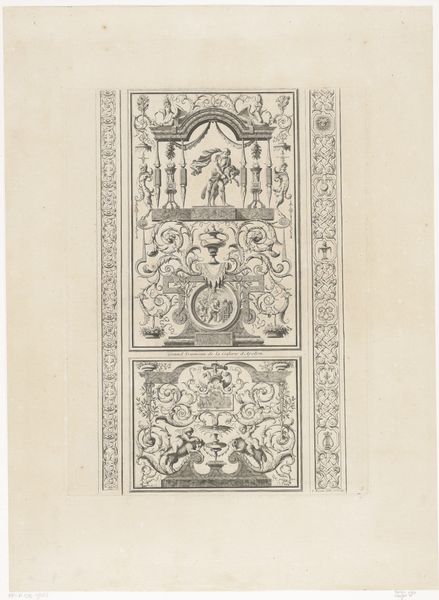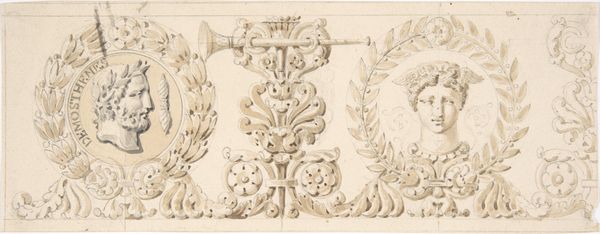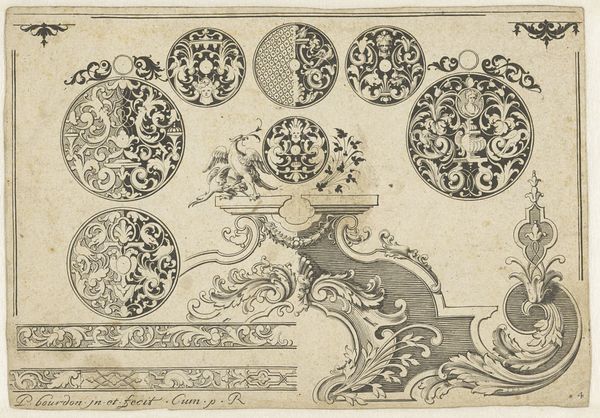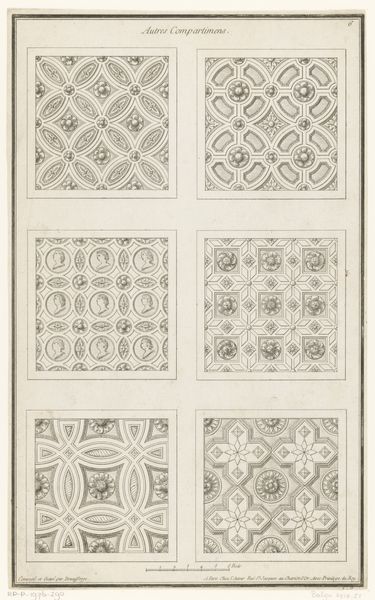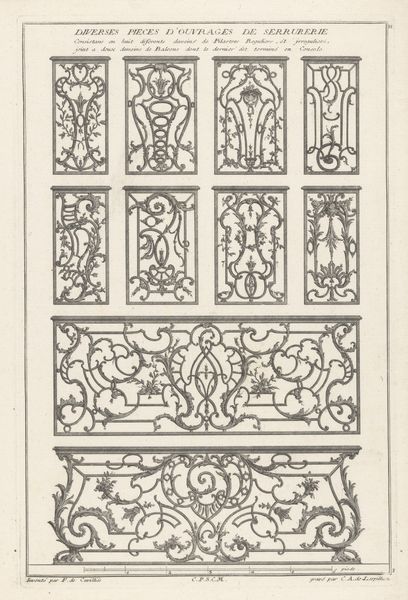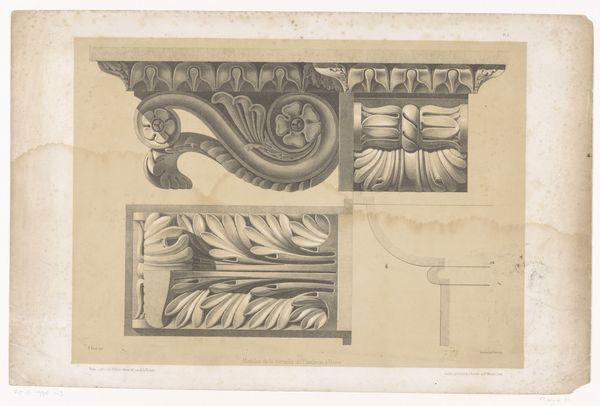
drawing, paper, pencil
#
drawing
#
neoclacissism
#
paper
#
geometric
#
pencil
#
decorative-art
Dimensions: height 320 mm, width 486 mm
Copyright: Rijks Museum: Open Domain
Curator: Welcome. We are looking at "Friezen," a pencil drawing on paper made by Hubert Roux the Elder, dating from between 1831 and 1847. Editor: My first impression is one of precision. It's rendered with such meticulous detail, a testament to the time and care taken in its creation. The balance of forms—floral and geometric—is also immediately striking. Curator: Indeed. Hubert Roux was working within a Neoclassical style, which is apparent in the use of these stylized acanthus leaves and classical motifs. It really evokes a sense of enduring architectural ornamentation, doesn’t it? Think of palatial residences. Editor: It makes me consider the practical aspect – these weren't artworks meant to hang on a wall, but to be translated into stone or plaster, informing the aesthetic environment through skilled labor. Each repetition, each cast, reflects layers of production. Curator: That’s very true. Roux's image becomes a coded map of the aesthetic values, connecting geometric precision with stylized floral elements, signifying controlled growth. Consider how those repetitive geometric shapes at the frieze center play into that order, offering visual pauses between more ornate forms. Editor: Precisely. These designs, when realized as physical architectural elements, become intertwined with social spaces and experiences, not merely aesthetic objects divorced from labor and context. Imagine the sculptor meticulously carving each leaf and curve. Curator: There is something about these conventional motifs that also resonates—these are recognizable, even expected elements in grand designs of that era, reflecting a desire to tie to classical precedent. The use of repeating shapes carries collective meaning across structures and through time. Editor: I wonder what material was primarily used, as I think that speaks more for its artistic expression of wealth. Was this meant to mimic limestone? Marble? Perhaps Roux's drawings can also instruct us about relative value between materials as class markers. Curator: Viewing Roux's drawing offers such a glimpse into design intention, linking both utility and artistry with encoded cultural values through these repeated symbols. Editor: I appreciate the ability to trace these symbols back to real world manifestations through materials like stone and plaster. A link from paper to a built environment, made by workers both visible and unseen.
Comments
No comments
Be the first to comment and join the conversation on the ultimate creative platform.


